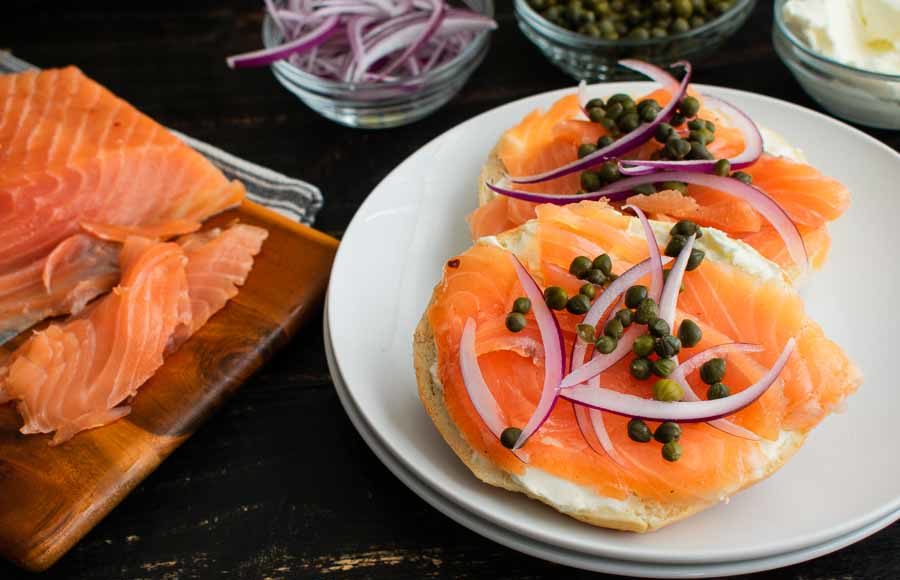It’s National Bagels and Lox Day, and I just had to celebrate. And not only celebrate but actually try making my own lox. Just reading the recipe prompted me to do some research, and I realized I have been incorrectly calling it smoked salmon for years. There is no smoke involved at all. Instead, lox is salmon cured in a mixture of salt and herbs. If you really need that smoked flavor (and I don’t blame you!), you want nova—salt-cured salmon that is then smoked. Both are delicious, but since I don’t have a smoker and it’s Lox and Bagel Day, I’m going to try making my own lox.
The only thing left to do once you’re done curing your own lox is to make sure you have plenty of a chilled sparkling wine on hand. Believe me: You will never again buy lox in the grocery store once you learn to make your own.
The Ingredients
This lox recipe is pretty simple and has only 7 ingredients. Most of them are spices, sugar, and salt. It isn’t specified, but I used non-iodized sea salt because iodized salt has an aftertaste I notice. I have to recommend non-iodized sea salt so the salmon doesn’t end up with the same aftertaste.
The only other items needed are a 1 1/4-pound salmon fillet and a bunch of fresh dill. I found both at my regular grocery store. A 1.79-pound skin-on fillet was $23.25, and a bunch of organic dill was $2.35, bringing my total cost to $25.60.
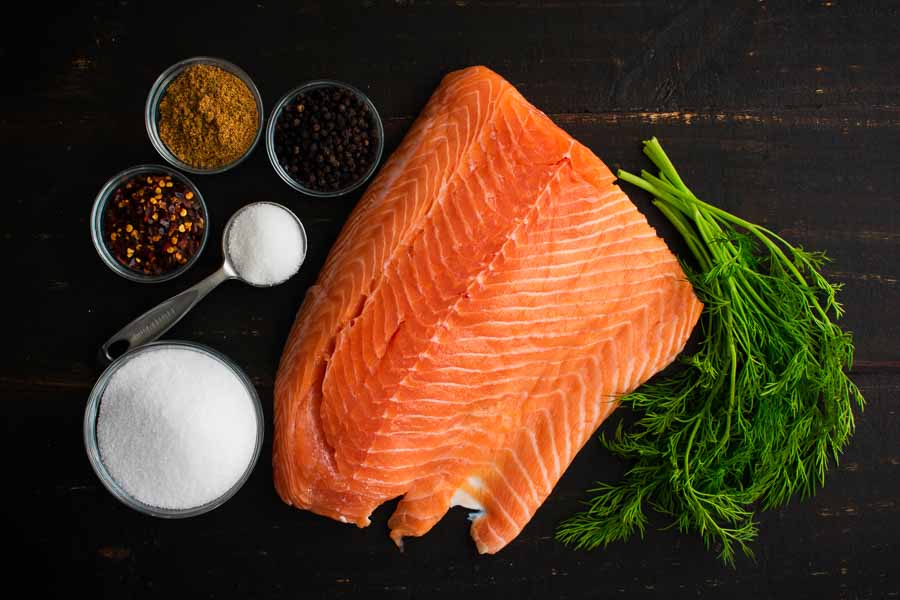
The Process
This recipe sounded very easy, and only had a few steps. Sometimes I wonder if I’m underestimating these types of recipes—they sound almost too good to be true. I’m happy to say that wasn’t the case with this one!
I did add a little to Step 1. The filet I bought had a very thin edge that I trimmed away. There was almost no meat on it (it was only about 1/8″ thick), so I got rid of it.
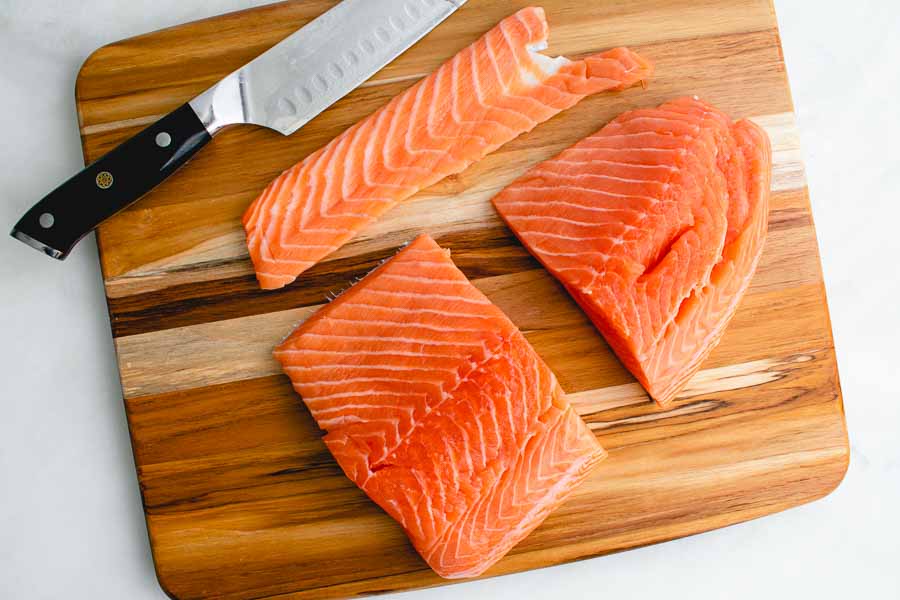
Next was mixing the salt and spices. Talk about easy! The black peppercorns didn’t even need to be ground or crushed. I will admit I considered crushing them to release more of their flavor. I decided not to since it wasn’t mentioned in the recipe.
The dill came next. All I had to do was trim off the excess stems and drop to onto half of the fillet. That’s it. No slicing, dicing, or anything else though I would mention that I washed it the day before to make sure it was completely dry.
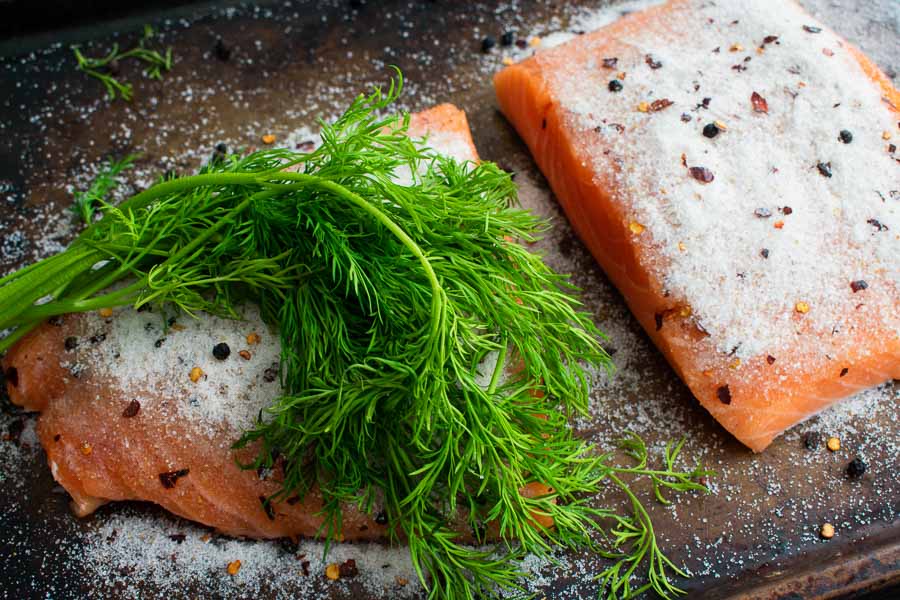
Finally, I double-wrapped the sandwiched salmon fillets in cling wrap, making sure to keep it tight. I didn’t want to expose the salmon to the air in case it affected the texture. Then I put it onto a plate, put the plate into the refrigerator, and weighted it with a small cast-iron skillet.
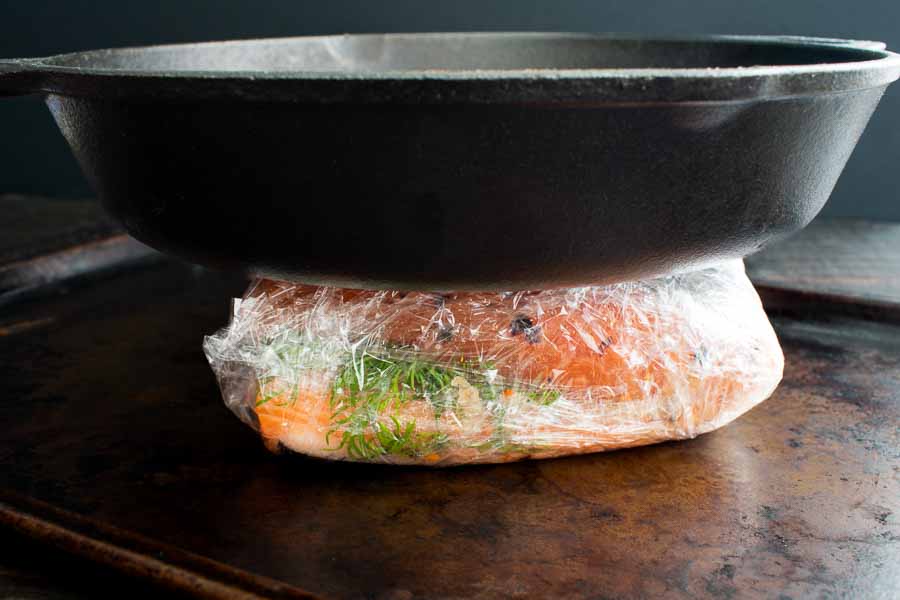
After 36 hours there was a lot of liquid built up in the cling wrap, and some did leak out like the recipe mentioned. I forgot to take a photo, but the liquid came halfway up the stack so it covered the bottom fillet. I flipped the wrapped packet, put the skillet back on, and waited until the 3-day curing process was done.
There was quite a bit of liquid in the wrap and on the plate by the time the salmon was cured. I poured it off, cut a sample piece, and decided it was a bit too salty for me. I decided to rinse my lox and pat it dry before continuing.
Timing
This recipe only lists the “cooking” time, but I made sure to time the prep work. It only took me 7 minutes to trim, season, wrap, and weight the salmon. I think it took me longer to prepare the items I served it with!
To Serve
Lox can be served in many ways, but I went for a bagel with cream cheese, red onion, and capers. You know, because of National Bagels and Lox Day (the whole reason I made this recipe). I did take a cue from the recipe and added some prosecco and orange juice for mimosas. Mwa! Chef’s kiss!!
